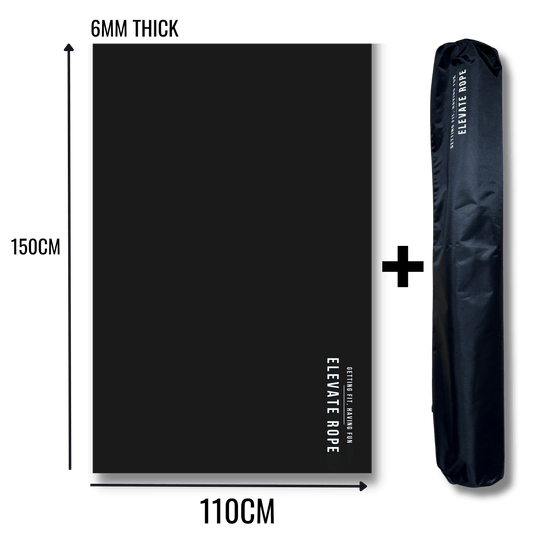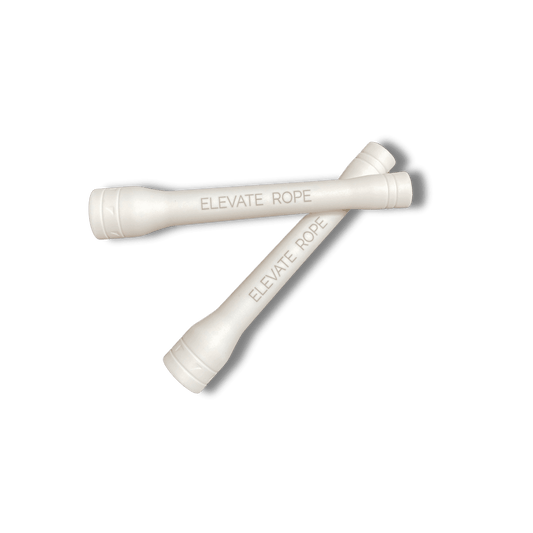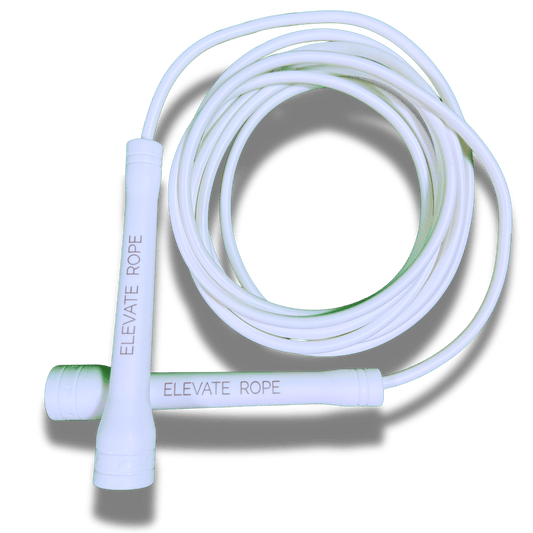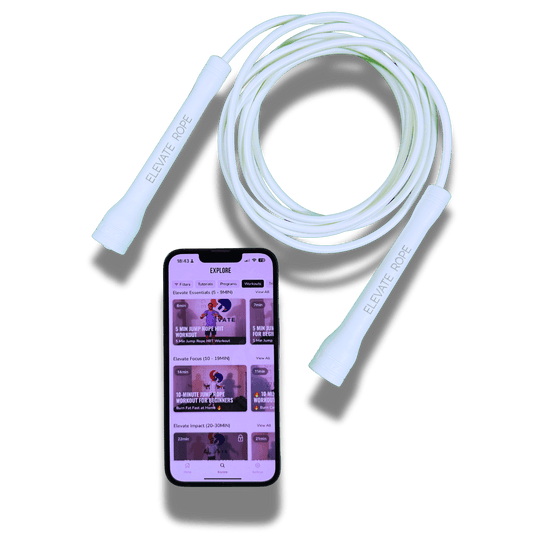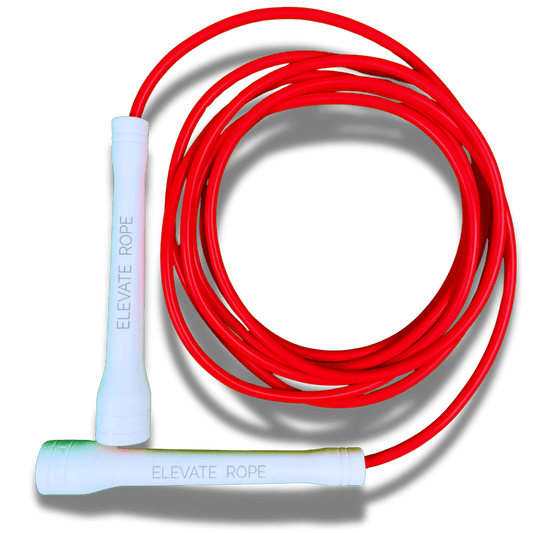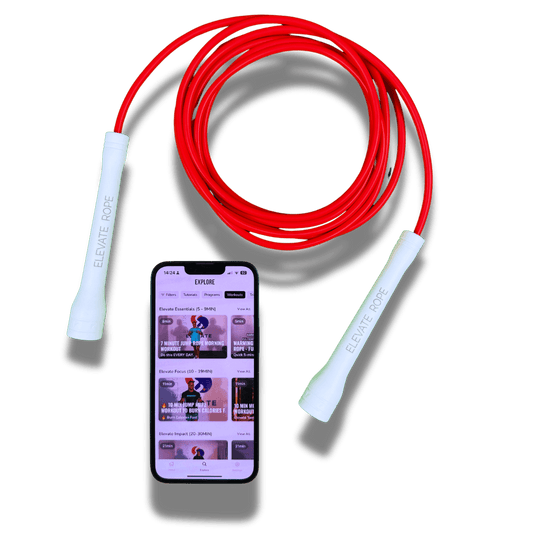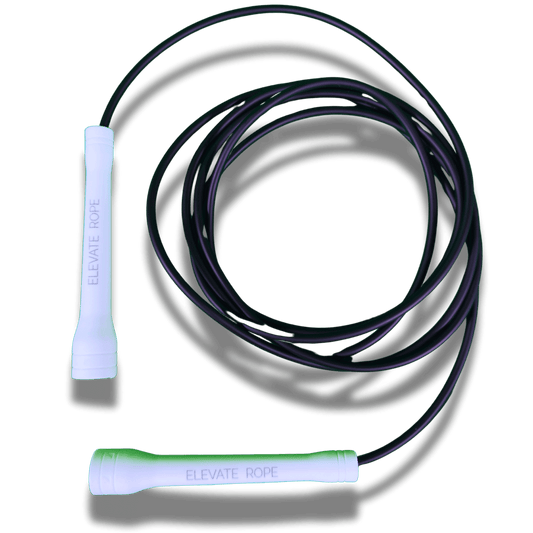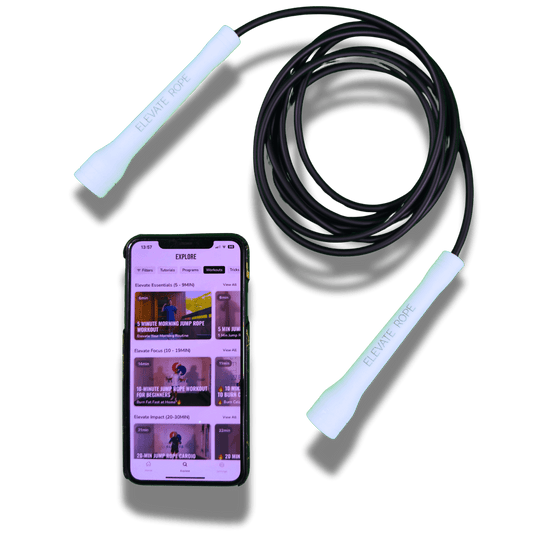Introducción: Por qué la progresión de movilidad es la clave oculta para la maestría en Freestyle
El salto de cuerda freestyle se trata de fluidez, creatividad y precisión técnica — pero sin una progresión excepcional de movilidad, incluso el saltador más hábil eventualmente se topará con un muro. Desde cruces por detrás de la espalda hasta múltiples complejos, la capacidad de tu cuerpo para moverse libremente y controlar su rango de movimiento determina si aterrizas trucos con suavidad o luchas con rigidez y riesgo de lesión.
En esta guía, aprenderás una progresión avanzada de movilidad para saltadores de freestyle que apunta a las articulaciones, músculos y patrones de movimiento exactos que necesitas para sobresalir. Ya sea que compitas, actúes o simplemente empujes tus límites, estos ejercicios te ayudarán a moverte con mayor facilidad, confianza y estilo.
Movilidad vs. Flexibilidad: La diferencia en Freestyle
- Flexibilidad: Rango pasivo de movimiento — poder alcanzar una posición cuando alguien te mueve allí.
- Movilidad: Control activo de tu rango — moverse dentro y fuera de posiciones con fuerza y estabilidad.
💡 Consejo profesional: Los saltadores de freestyle necesitan ambos, pero la movilidad es lo que te permite aterrizar trucos sin colapsar en una mala forma.

Demandas clave de movilidad para saltadores de Freestyle
- Rotación y Extensión de Hombro — Crucial para cruces, envolturas y transiciones detrás de la espalda.
- Rotación de la Columna Torácica — Permite un movimiento fluido del torso para trabajos complejos de pies y balanceos laterales.
- Movilidad de Cadera — Soporta el impulso de la rodilla y variaciones de piernas abiertas.
- Dorsiflexión y Flexión Plantar del Tobillo — Afecta el control de la altura del salto y la absorción al aterrizar.
- Supinación/Pronación de Muñeca — Control fino para la posición de la cuerda en los trucos.
- Estabilidad del Core — Mantiene la alineación corporal limpia en movimientos en el aire.
Marco Progresivo de Movilidad para Estilo Libre
Usaremos un Sistema de Progresión de 4 Etapas:
- Movilidad Fundamental — Ejercicios básicos de rango activo de movimiento.
- Preparación Dinámica de Trucos — Flujos asistidos con cuerda y específicos de estilo libre.
- Integración de Patrones Complejos — Combinando múltiples demandas de progresión de movilidad en un solo ejercicio.
- Movilidad de Rendimiento — Ejecución a alta velocidad, lista para competición.
Etapa 1: Ejercicios Fundamentales de Movilidad (Control Base)
- Pasos de Hombro con Cuerda — 10 repeticiones
- Mantenimientos en Sentadilla Profunda con Balanceos de Tobillo — 30 seg
- Flujo Gato-Vaca a Enhebrar la Aguja — 8 repeticiones
- Estiramiento de Flexores de Cadera Arrodillado con Alcance por Encima de la Cabeza — 20 seg por lado
Etapa 2: Preparación Dinámica de Trucos
- Desplazamientos de Hombro Asistidos con Cuerda — 8 repeticiones (lento)
- 90/90 Rotaciones de Cadera con Inclinación — 8 por lado
- Zancada con rotación torácica — 6 por lado
- Rebotes de tobillo en colchoneta — 20 seg
Etapa 3: Integración de patrones complejos
- Flujo de movilidad detrás de la espalda — Pasadas de cuerda con rotación del torso
- Balanceo lateral a flujo de paso cruzado — Trabajo de pies + movilidad de hombros
- Saltos con piernas separadas en suspensión — Control en el aire con flexibilidad de cadera
Etapa 4: Movilidad de rendimiento
Estos son ejercicios de movilidad bajo presión — imitando la velocidad e intensidad del freestyle.
- Cambios de tempo en la cuerda con cambio de dirección — Fuerza la movilidad reactiva
- Alternar EB (Elephant Back) con rotación del torso — Combina el rango de hombros y columna
- Balanceos laterales rápidos en múltiplos de potencia — Prueba el control en el rango final
Fuerza y estabilidad para ganancias de movilidad
La progresión de movilidad sin estabilidad conduce a lesiones. Añade:
- Deadlifts rumanos a una pierna — Para la estabilidad de cadera y tobillo
- Rotaciones externas con banda — Para la salud del hombro
- Transiciones de plancha a plancha lateral — Para la fuerza rotacional del core
Errores comunes en el entrenamiento de movilidad freestyle
- Saltar los ejercicios fundamentales — Conduce a un trabajo avanzado descuidado
- Estiramiento excesivo antes del entrenamiento — Reduce la potencia explosiva
- Descuidar las muñecas y los antebrazos — Crítico para el control de la cuerda
- No entrenar movilidad a tempo freestyle — Limita la transferencia al rendimiento

Ejemplo de Horario Semanal de Movilidad para Saltadores Freestyle
3–4 sesiones por semana — 20–25 minutos por sesión
- Día 1: Preparación Fundamental + Dinámica
- Día 2: Integración de Patrones Complejos
- Día 3: Movilidad de Rendimiento + Apoyo de Fuerza
- Día 4: Flujo Opcional de Movilidad para Recuperación Activa
Equipo que Eleva el Entrenamiento de Movilidad para Freestyle
- Elevate Beaded Rope — Lo mejor para retroalimentación táctil en flujos de trucos
- Performance Mat — Amortigua los aterrizajes durante trucos con piernas separadas
- Resistance Bands — Para trabajo específico de hombros y caderas
- Foam Roller — Para la preparación tisular antes de la sesión
Conclusión
El salto con cuerda freestyle no es solo sobre trucos — es sobre cómo tu cuerpo se mueve a través de ellos. Siguiendo esta progresión avanzada de movilidad para saltadores freestyle, desbloquearás nuevos patrones, mejorarás la eficiencia y reducirás drásticamente el riesgo de lesiones.
Tu creatividad solo está limitada por tu movilidad. Entrénala tan en serio como entrenas tus habilidades, y tu estilo libre nunca se sentirá igual.
